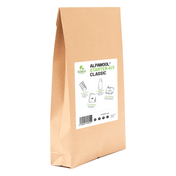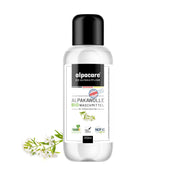How to care for your knitted items properly
You invest a lot of time and money in your precious hand-knitted items - you want them to stay beautiful for years. Washing them properly is particularly important.
The label will give you instructions on how to clean your alpaca yarn. In most cases, it says to hand wash. To do this, use enough water so that your knitted item can soak up the water and still have room to move. The water should be lukewarm at most. It is best to use a wool detergent. Alternatively, a hair shampoo will also do. Please never use fabric softener , as it sticks the fibers together and makes the knitted item floppy.
Bathe the item carefully like a baby by gently rocking it back and forth in the washing water, never rub or wring ! The water for rinsing must be the same temperature, wool hates temperature differences - in the worst case scenario, these can lead to felting.
Lift your knitted item out of the water from below with both hands so that nothing is hanging down and squeeze it gently. Then spread it out loosely on a large towel and roll it up with the towel. You can now press firmly or even jump around on it to soak up as much excess water as possible.
Now carefully pull it into shape and leave it to dry flat ( never hang it up to dry!). If you want to dry the knitted item on a clothes rack , it is best to place a large towel underneath so that the knitted item does not hang down between the lines and form unsightly bumps.
If your washing machine has a wool cycle , you can wash any knitted item in the washing machine - even yarns that are marked as hand-washable. The knitted item is treated more gently than if you wash it by hand and it also dries much faster.
However, please note the following:
Not every washing machine is equally gentle on laundry . Before you put a knitted item made from a new yarn into the machine, you should always wash the stitch sample first. If this survives the wash cycle unscathed, the larger item will too.
Set the temperature to cold wash /0 degrees. Put the knitted item in a laundry net that is not too big (a small pillowcase will do), each item in its own net. Don't overload the washing machine; you should wash a maximum of three sweaters per wash cycle. Add a little wool detergent , set the wool cycle with a wool spinner ( lowest speed ), and off you go.
Never put your knitted items in the dryer – unless you want to felt them intentionally.
Knitted items do not need to be ironed . Synthetic fibers in particular do not respond well to this, as they lose their tension and your sweater becomes sagging. In exceptional cases, for example if the cuffs fold over or the edges roll, you can steam cotton and natural fibers very carefully at a low temperature under a damp cloth . However, this does not always lead to the desired result. Here too, test the stitch sample beforehand to see whether your yarn will survive steaming unscathed.
Avoid washing too often. Wear a T-shirt under winter sweaters, then the sweater doesn't need to be washed as often. Alpaca is also naturally dirt-repellent and self-cleaning to a certain extent. Simply leave your alpaca items outside in the fresh air overnight and the next morning your knitted item will be fragrant and fresh again. This also allows the fibers to regain their natural moisture. In the worst case, dried-out wool becomes brittle.
Never hang your knitted items on hangers , even when they are dry. The weight of the knitted items will make them longer or distort them, particularly in the shoulder area, which is unsightly. Store your sweaters and jackets loosely in the closet and remember to protect them from moths !




